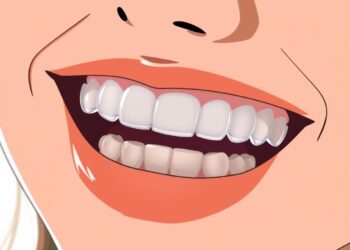Orthognathic surgery offers life-changing fixes for jaw misalignment. This guide looks at four effective procedures. They include maxillary osteotomy and genioplasty, backed by top medical places like the Cleveland Clinic and Mayo Clinic. Find out how these surgeries can better your bite, face, and health.
Learn how these surgeries tackle problems like underbites, overbites, and TMJ issues. We’ll cover recovery times, how to get a consultation, and long-term results. This 2025 guide offers expert tips and patient info to guide your choices.
Key Takeaways
- Orthognathic surgery options correct jaw misalignment to improve both function and appearance.
- Four key procedures include maxillary, mandibular, bimaxillary osteotomy, and genioplasty.
- Patients gain better speech, chewing ability, and reduced TMJ pain after surgery.
- Recovery times vary but often involve orthodontic care and lifestyle adjustments.
- Insurance coverage may apply for medically necessary cases like severe misalignment.
What is Orthognathic Surgery?
Orthognathic surgery fixes jaw problems that affect how we eat and talk. It makes jaws line up right to improve our bite and face look. This surgery is for those who can’t get better with braces or other treatments.
Definition and Purpose
Corrective jaw surgery fixes jaw issues from birth, injuries, or growth problems. Its main aims are:
- Aligning jaws for proper teeth alignment (occlusion)
- Enhancing chewing and speaking abilities
- Reducing TMJ pain and chronic headaches
- Improving facial aesthetics
Common Reasons for Surgery
People might need this surgery for:
- Severe overbites or underbites disrupting eating
- Facial asymmetry from jaw developmental issues
- Chronic jaw pain linked to temporomandibular joint (TMJ) disorders
- Post-trauma jaw displacement
Oral and maxillofacial surgeons do these surgeries with orthodontists. Before surgery, patients get scans and dental checks to see if they’re a good fit.
Benefits of Orthognathic Surgery
Orthognathic surgery can change your life in big ways. It fixes jaw problems, making your face and mouth work better. People often feel happier and more confident after surgery.
Improved Functionality
Chewing better, speaking clearer, and less jaw pain are common benefits. Many feel less pain in their heads or jaw after surgery. For example:
- Corrected bites make eating easier.
- Aligned jaws ease muscle strain.
- Each patient gets a surgery plan that fits them.
Enhanced Aesthetics
Looking better in the mirror boosts self-confidence. Balanced faces and straightened bites look natural. Surgeons aim for perfect harmony without overdoing it.
Long-term Health Advantages
Good jaw alignment means less tooth decay, gum disease, and breathing problems. It also lowers the risk of jaw disorders. Regular check-ups with an orthodontist keep your results looking great.
Types of Orthognathic Surgery
Orthognathic surgery fixes jaw problems with special surgeries. The type chosen depends on the jaw area needing fix. These four surgeries tackle different issues to fix function and balance:
Maxillary Osteotomy
This surgery fixes the upper jaw. It’s for when the maxilla is too far forward or back. Surgeons use plates and screws to move the bone.
This improves breathing, speech, and looks. It’s used for a gummy smile or a small upper jaw.
Mandibular Osteotomy
This surgery is for the lower jaw. It’s best for big overbites or underbites. The jawbone is cut and moved to match the upper jaw.
This makes chewing better and looks better too.
Bimaxillary Osteotomy
This surgery fixes both upper and lower jaws. It’s for when both jaws need fixing. It makes sure the face looks balanced and bites right.
Genioplasty
Genioplasty changes the chin. It can make the chin bigger, smaller, or change its angle. It’s often done with jaw surgeries to get symmetry.
Candidates for Orthognathic Surgery
To be eligible for orthognathic surgery, three things matter: age, how bad the misalignment is, and overall health. Doctors check each patient to make sure they can safely and effectively get better.
Age Considerations
Most people who get this surgery are adults or teens whose bones have stopped growing. Girls usually start at 14–16, and boys at 17–21. But, if the misalignment is very bad, it might need to be fixed sooner.
Doctors use X-rays to see if the bones are ready. This helps decide if someone is ready for surgery.
Severity of Jaw Misalignment
People with mild misalignment might just need braces. But, those with more serious problems need surgery. This is because surgery fixes problems that affect how you eat, chew, or even breathe.
- Difficulty chewing or biting
- Chronic jaw pain or temporomandibular joint (TMJ) dysfunction
- Visible facial asymmetry affecting breathing or speech
Even if you just want to look better, surgery focuses on fixing how things work first.
Overall Health Factors
Being in good health is key. You can’t have active infections, uncontrolled diabetes, or bleeding problems. Smoking or being overweight might mean you need to change your lifestyle before surgery.
Doctors look at your medical history to make sure you’re safe during surgery and while you recover.
The Consultation Process
Finding the right orthognathic surgeons is key for jaw realignment success. The journey begins with a detailed consultation. Here, surgeons assess your unique needs. Below are the essential steps for a productive session.
Preparing for Your Consultation
Take these items to your first meeting:
- Medical records, including past dental work
- List of medications and allergies
- Notes on symptoms or concerns
What to Expect During the Evaluation
Surgeons will do three main things:
- Physical exam to check jaw and bite
- Review of X-rays and 3D imaging for bone structure
- Talk about surgical options and what to expect
Questions to Ask Your Surgeon
Ask these important questions during your visit:
- How many orthognathic surgeries have you done?
- What techniques do you use for my case?
- What steps are crucial for recovery after surgery?
- What signs show complications after surgery?
Good orthognathic surgeons will answer all your questions. They make sure you understand your treatment plan.
Pre-Surgery Preparations
Getting ready for orthognathic surgery involves several important steps. These steps help pick the right surgery for your jaw. They make sure the surgery is precise and safe.

Diagnostic Imaging
Advanced imaging is key at every surgery stage. Dentists use X-rays and 3D CT scans to study jaw structure. These scans help surgeons plan the best surgery for you.
They show how teeth and bones will move during the surgery. This helps surgeons make the right decisions.
Orthodontic Treatment
Many people need braces or aligners before surgery. This aligns teeth for the jaw movement. It makes sure teeth are in the best spot for surgery.
Orthodontists might adjust braces to keep teeth in place. This is important for bone adjustments.
Lifestyle Adjustments
- Quit smoking: Smoking slows healing and increases infection risk.
- Soft diet: Eat soft foods to avoid jaw strain before surgery.
- Medication review: Avoid blood thinners unless your surgeon says it’s okay.
These steps are crucial for a successful surgery. Each one helps the chosen surgery work well. They also lower the chance of problems after surgery.
The Surgical Procedure
Orthognathic surgery uses precise planning and advanced methods. It starts with anesthesia tailored to the patient’s needs. This ensures comfort during the operation. Here’s what happens during the procedure.
Anesthesia Options
Most procedures use general anesthesia to keep patients asleep and pain-free. Sometimes, local anesthesia with sedation is used for simpler surgeries. Your team will choose the safest option for you.
Duration of Surgery
The time needed varies with the case’s complexity. Simple adjustments take 1–3 hours. More complex cases can take 4–6 hours. Advanced imaging tools help guide the surgery.
Surgical Techniques Used
Modern orthognathic surgery techniques blend old and new. Key steps include:
- Osteotomy: Bone cuts made using saws or lasers to reposition jaw segments
- 3D Modeling: Virtual simulations map bone movements before incisions
- Fixation: Tiny plates and screws secure bones in new positions
Computer-guided tools ensure accuracy during bone alignment. This reduces risks and speeds up recovery. After surgery, temporary braces or wires may be used to stabilize the jaw.
Recovery and Aftercare
Recovering from orthognathic surgery needs careful steps. Knowing the timeline and managing symptoms is key. Follow these guidelines to help your body heal.
Typical Recovery Timeline
Most patients follow this timeline:
- 1–2 weeks: Swelling peaks. Eat soft foods only. Do not overexert yourself.
- 2–6 weeks: Swelling goes down. You can start doing more activities. You can also eat regular foods again.
- 6 months to 1 year: Your jaw will fully stabilize. You might need final adjustments to your orthodontics.
“Full recovery often takes 12–18 months, with gradual improvements in jaw function and appearance.” – Mayo Clinic
Managing Discomfort
Here are ways to lessen pain and swelling:
- Take pain medicine as your doctor tells you to (like ibuprofen or acetaminophen).
- Use cold compresses to reduce swelling in your face.
- Eat soft foods like mashed potatoes or yogurt for 6–8 weeks.
- Rinse your mouth with warm salt water often to prevent infection.
Follow-Up Appointments
Surgeons will see you every 2–4 weeks after surgery. These visits are important for:
- Checking if your teeth are aligning right with X-rays.
- Watching how your body is healing.
- Making any needed changes to your braces or retainers.
Missing these appointments can lead to problems like your teeth moving back. It’s important to be consistent for the best results.
Potential Risks and Complications
Orthognathic surgery can fix jaw alignment but has risks. It’s important to know these before deciding. Here are key points to think about.
Common Risks
- Bleeding during or after surgery
- Infection at surgical sites
- Nerve damage causing temporary numbness
- Swelling and bruising of facial tissues
Rare Complications
- Jaw instability requiring revision surgery
- Teeth misalignment recurrence
- Bone healing delays (non-union)
- Permanent sensory changes
“Postoperative infections occur in 2-5% of cases when proper hygiene protocols are not followed,” states the Mayo Clinic.
Signs to Watch For
Get help right away if you notice:
- Fever over 101°F (38.3°C)
- Severe uncontrolled bleeding
- Difficulty breathing or swallowing
- Sudden swelling increase
Most risks can be lessened with careful planning and a board-certified oral surgeon. Regular check-ups after surgery can lower risks by over 40%, says Cleveland Clinic.
Insurance and Financing Options
Maxillofacial surgery, like orthognathic procedures, needs careful planning. This includes looking at the financial side. Many patients get partial or full coverage from health insurance. Here’s how to handle costs and payment plans:
Understanding Coverage
First, check your insurance policy. Most plans cover jaw realignment if it’s medically needed. Here are some steps:
- Get a pre-authorization form from your surgeon’s office
- Look at your benefits for orthodontic and surgical care
- Find out about deductibles and co-pays for maxillofacial surgery
Payment Plans and Options
Hospitals work with third-party lenders to offer:
- Monthly payment plans with 0% interest for 12-24 months
- Credit-based financing programs
- Using FSA/HSA accounts for eligible costs
Financial Assistance Programs
Nonprofits and hospitals help with:
- Need-based grants for those with low income
- Discounts for the uninsured
- Employer help with payments
Talk to your surgeon’s billing team about all options. Many practices help find ways to manage surgery costs. Always compare prices from different providers to find the best deal.
Life After Orthognathic Surgery
Recovery from orthognathic surgery is a new start. Patients see better bite alignment and facial symmetry. But, it takes time and effort to get used to these changes. Orthodontic adjustments after surgery help keep the results good.
Adjusting to New Oral Function
At first, speech and chewing might feel strange. Eating soft foods and small bites helps. Speech therapists can help with speaking problems. Most people see big improvements in 3–6 months.
Maintaining Results Long-Term
Going to the dentist regularly and wearing retainers are key. Follow these steps to keep your results:
- Go to all your orthodontic appointments.
- Brush and floss every day to avoid problems.
- Tell your dentist or orthodontist about any discomfort or alignment issues right away.
“My speech therapist taught me exercises that helped me regain confidence. The results are life-changing!” – Sarah T., 3-year post-op patient
Orthognathic treatment options include wearing braces after surgery or small adjustments. Staying consistent with aftercare helps keep results stable. This reduces the need for more surgeries. Taking care of your teeth long-term makes temporary fixes last forever.
Seeking Support
Recovering from facial skeletal surgery can be tough. But, finding people who get what you’re going through helps a lot. Support groups offer both emotional support and useful tips. They help you deal with changes in speech, eating, or how you look.
Joining Support Groups
Support groups for facial skeletal surgery patients are safe places to share. The American Association of Oral and Maxillofacial Surgeons (AAOMS) lists local and online groups. There, patients talk about recovery tips and emotional challenges.
These groups often have surgeons and speech therapists. They answer questions about healing times or post-op care.
Engaging with Communities
Online communities on Facebook or Reddit have forums for facial skeletal surgery. Patients share their before-and-after stories and track their progress. They also learn about tools to help with recovery.
Being part of these groups makes you feel less alone. It gives you hope during tough times like hardware removal or speech therapy.
Resources for Patients
The AAOMS patient guide and the American Dental Association’s orthognathic surgery toolkit explain post-op care. Hospitals like Johns Hopkins offer free webinars on managing swelling or diet changes. These resources help you know when to reach out to surgeons about unexpected symptoms.

















